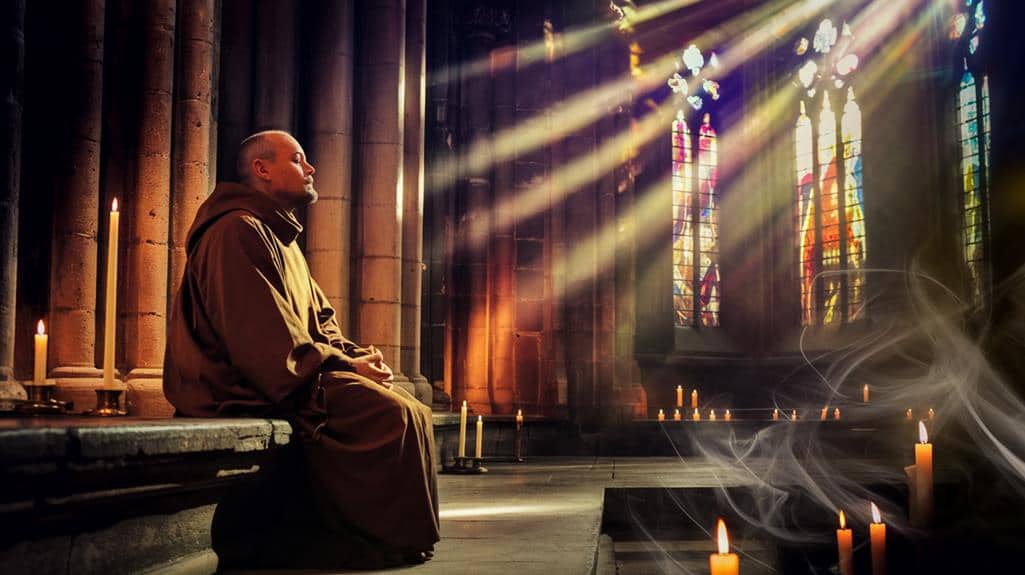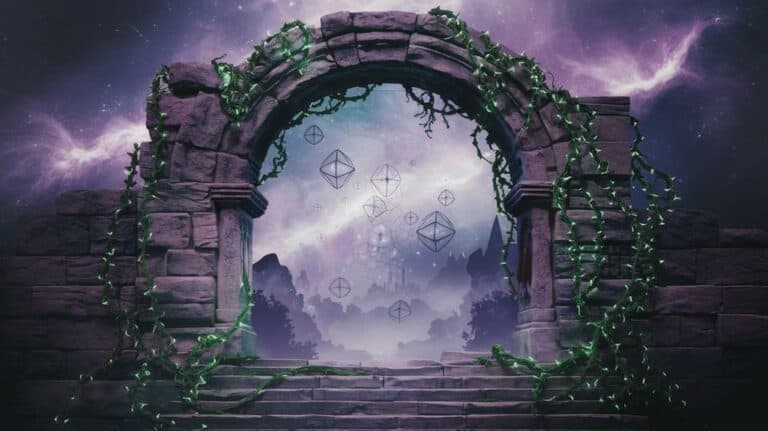What Is Mysticism in Christianity?
You’ve probably heard the term “Christian mysticism” but might wonder what separates these spiritual seekers from mainstream believers. While traditional Christian practice often focuses on doctrine, scripture, and communal worship, mystics pursue a more direct and experiential connection with God. They’re not content with simply knowing about the Divine—they yearn to know God intimately through contemplative practices and transformative experiences. This ancient tradition has shaped Christianity from its earliest days, producing profound insights and extraordinary accounts of spiritual encounters. What draws these seekers toward such an intense, personal journey with the Divine, and what might their experiences reveal?
Origins of Christian Mysticism
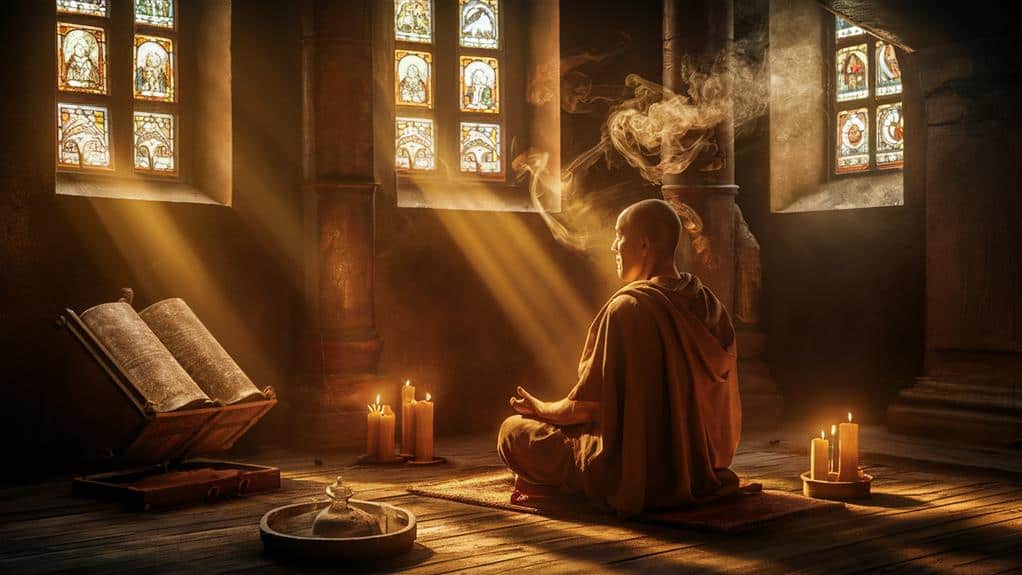
The origins of Christian mysticism trace back to the earliest days of the Church, emerging from both Jewish contemplative traditions and Hellenistic spiritual practices.
You’ll find that early Desert Fathers and Mothers sought direct experiences of the divine through meditation, fasting, and solitude, establishing practices that would influence centuries of mystic tradition. As you explore these roots, you’ll discover how they’ve woven together threads of Jewish mystical thought with Greek philosophical concepts.
In the first few centuries after Christ, you’ll see how Christian mystics developed unique approaches to spiritual transformation. They drew upon Jesus’s teachings about the Kingdom of God within, while incorporating elements of Neo-Platonic philosophy that emphasized the soul’s journey toward union with the Divine.
You’re inheriting a tradition where figures like Origen and Clement of Alexandria bridged the gap between intellectual understanding and mystical experience.
They’ve shown you that mysticism isn’t just about ethereal experiences – it’s a practical path of transformation that’s been refined through generations of spiritual seekers who’ve yearned to know God directly, beyond mere intellectual understanding.
Key Mystics Through History
Throughout Christianity’s rich history, influential mystics have shaped the spiritual landscape of the faith. You’ll discover profound voices like Meister Eckhart, whose radical teachings on the divine spark within the soul challenged medieval orthodoxy, and Teresa of Ávila, who detailed her intimate encounters with God through vivid metaphors of interior castles and spiritual marriage.
In the early church, you’ll encounter Origen of Alexandria, who developed allegorical interpretations of scripture that opened new pathways to divine understanding. The anonymous author of “The Cloud of Unknowing” will guide you through the practice of contemplative prayer, teaching you to reach beyond intellectual knowledge to touch the divine.
You’ll find wisdom in Julian of Norwich’s “Revelations of Divine Love,” where she explores the feminine aspects of God’s nature and His boundless compassion.
Modern mystics like Thomas Merton have bridged ancient contemplative traditions with contemporary spirituality, showing you how to find sacred silence amid life’s chaos. Each of these mystics offers you unique insights into the transformative journey of the soul toward union with God.
The Mystical Path
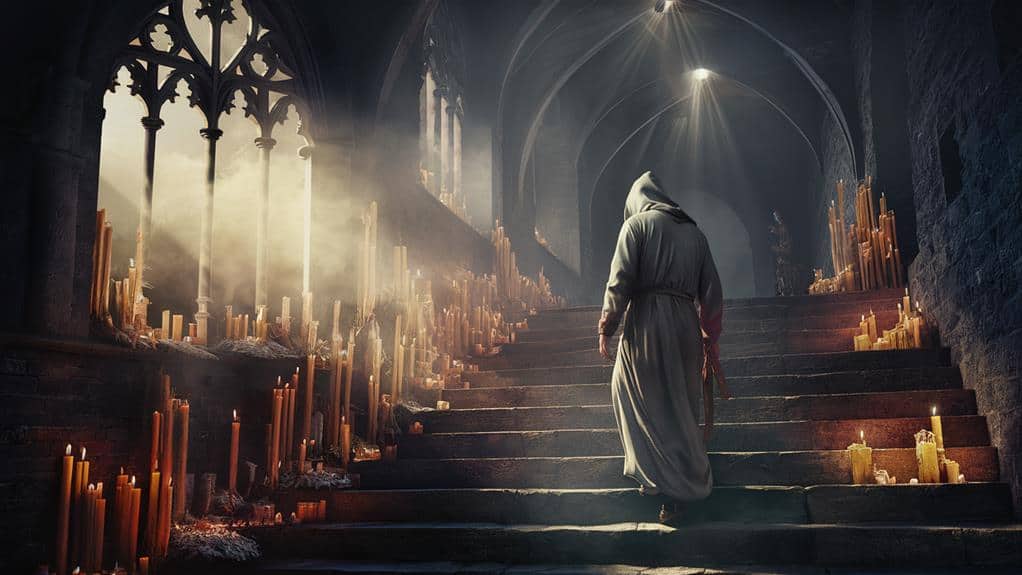
Christianity’s mystical path encompasses three traditional stages: purgation, illumination, and union with God.
In the first stage, you’ll find yourself letting go of attachments that separate you from divine connection, clearing away the spiritual clutter that’s accumulated through worldly living. You’re called to examine your inner landscape with unflinching honesty, releasing what no longer serves your spiritual growth.
As you move into illumination, you’ll discover new depths of spiritual awareness, where divine truth begins to shine through your everyday experiences.
It’s here that you’ll start perceiving God’s presence in unexpected places – in nature’s whispers, in moments of profound silence, and in the faces of those around you. Your prayer life transforms from mere words into deep communion.
The final stage, divine union, represents the ultimate freedom you’re seeking – a complete surrender into God’s presence.
You’ll find yourself drawn into what mystics call “the cloud of unknowing,” where intellectual understanding gives way to direct experience. Here, you’re no longer merely seeking God; you’re experiencing the divine reality that’s always been present.
Contemplative Prayer Practices
Several contemplative prayer practices form the foundation of Christian mysticism, each offering unique pathways to divine communion.
You’ll discover ancient methods like lectio divina, where you’re invited to immerse yourself in sacred texts, allowing words to penetrate your heart as you move through reading, meditation, prayer, and contemplation.
The Jesus Prayer, with its rhythmic repetition of “Lord Jesus Christ, have mercy on me,” can transform your ordinary breathing into a sacred pulse that aligns your spirit with divine presence.
You can explore centering prayer, where you’ll learn to rest in profound silence, letting go of thoughts and images while anchoring yourself to a sacred word that draws you deeper into God’s embrace.
Through the practice of contemplative gazing, you’ll find yourself drawn into icons or natural beauty, allowing your eyes to become windows through which divine light flows.
When you engage in these practices regularly, you’re not just performing exercises – you’re opening doorways to mystical encounters that transcend ordinary consciousness, leading you into direct experience of divine reality that words can’t fully capture.
Divine Union and Transformation
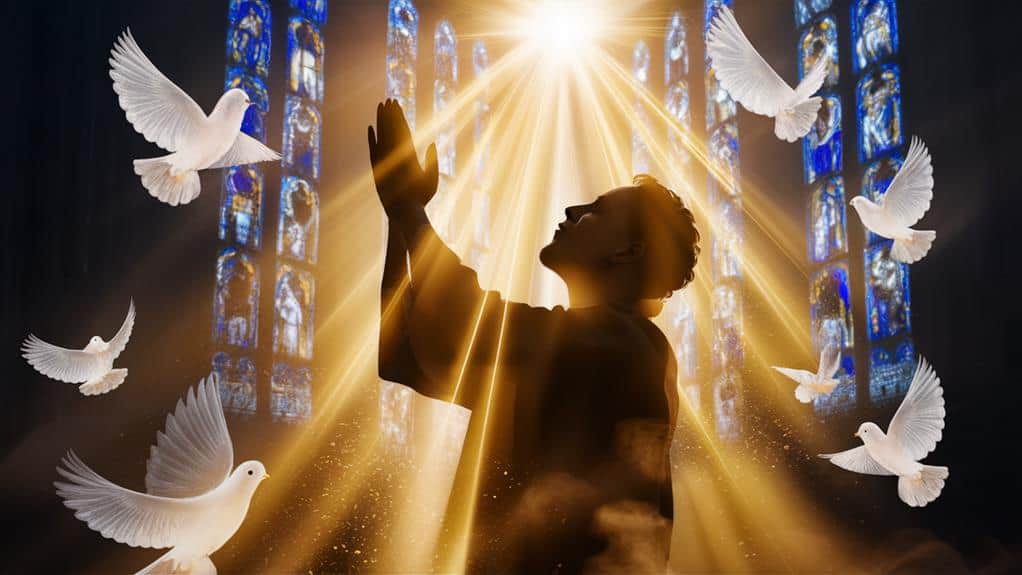
At the heart of Christian mysticism lies divine union – the ultimate transformation where the soul merges with God’s presence while maintaining its distinct identity.
You’ll discover that this profound union isn’t about losing yourself, but rather about finding your truest self in perfect harmony with the Divine. As you journey deeper, you’ll experience a gradual dissolution of the barriers between your consciousness and God’s infinite love.
This transformative process will reshape your entire being – mind, body, and spirit. You’ll notice that your thoughts begin to align with divine wisdom, your actions flow from a place of sacred purpose, and your heart expands to embrace a love that transcends human understanding.
Through this mystical marriage, you’re invited to participate in what the ancient mystics called “deification” – becoming more like God while paradoxically becoming more authentically human.
The boundaries between heaven and earth begin to blur in your daily experience, as you find yourself living simultaneously in both temporal and eternal domains. Each moment becomes a doorway to deeper communion, where you’re continuously transformed by the endless ocean of divine presence.
Mystical Literature and Writings
The rich legacy of Christian mystical experiences has been preserved through centuries of profound writings and literature. You’ll discover an extraordinary treasure trove of spiritual insights through the works of mystics who’ve documented their intimate encounters with the Divine.
From the passionate poetry of St. John of the Cross to the illuminating visions of Julian of Norwich, these texts offer you windows into transformative spiritual experiences.
As you explore mystical literature, you’ll encounter diverse forms of expression – from St. Teresa of Ávila’s detailed spiritual autobiography to The Cloud of Unknowing’s anonymous guidance on contemplative prayer.
These writings don’t just describe experiences; they’ll serve as your practical guides for your own spiritual journey. You’ll find that medieval mystics like Meister Eckhart offer profound theological insights, while Hildegard of Bingen’s vivid descriptions of her visions combine spirituality with natural wisdom.
Through their words, you’re invited to explore the depths of divine love and the transformative power of mystical union. These texts continue to resonate across centuries, offering you timeless wisdom for your own path toward spiritual enlightenment.
Modern Christian Mystical Movements
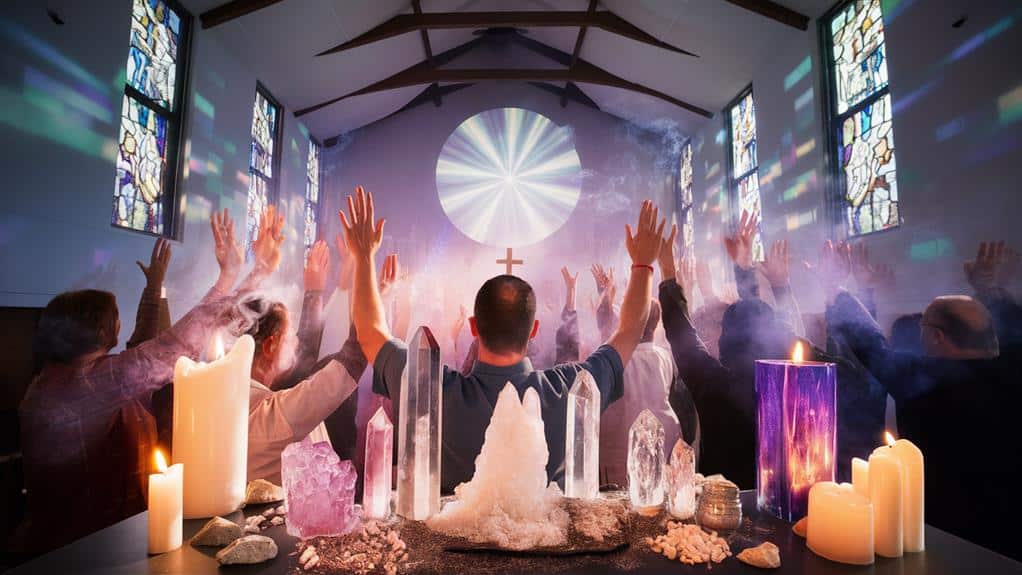
Modern Christian mysticism has evolved considerably since the 20th century, blending traditional contemplative practices with contemporary spiritual approaches.
You’ll find movements like Centering Prayer, developed by Thomas Keating, which draws from ancient monastic traditions while speaking to today’s spiritual seekers. The Charismatic Renewal has brought mystical experiences into mainstream Christianity, emphasizing direct encounters with the Holy Spirit.
You’re witnessing a resurgence of interest in contemplative practices through organizations like the Center for Action and Contemplation, founded by Richard Rohr, which bridges traditional mysticism with modern social justice concerns.
The Taizé movement has captured many seekers’ hearts, offering a unique blend of meditative singing and silence that transcends denominational boundaries.
In these modern expressions, you’ll discover how Celtic Christian spirituality has been revived, emphasizing creation’s sacredness and the thin spaces between heaven and earth.
The emergence of eco-spirituality within Christian frameworks shows how mystical awareness now extends to environmental consciousness, while contemplative activism demonstrates how inner transformation can fuel outer change in ways that medieval mystics might never have imagined.
Conclusion
As you explore Christian mysticism, you’ll find it’s more than an ancient spiritual path—it’s a living invitation to experience God directly. Through contemplative practices and the wisdom of mystics across centuries, you’re offered a transformative journey into divine union. Whether you’re drawn to silent prayer, mystical writings, or modern contemplative movements, the mystical tradition continues to illuminate the profound depths of Christian spirituality available to you today.



